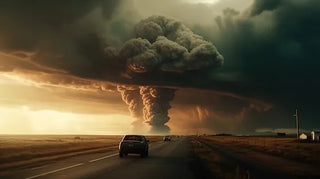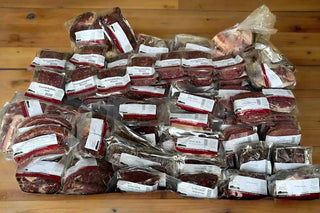A Beginner's Guide to Doomsday Prepping
Prepping, sometimes known as "doomsday prepping," often carries with it images of underground bunkers, stockpiles of canned goods, and survivalists preparing for a post-apocalyptic world. But in reality, prepping is a broad and diverse movement that focuses on preparing for a range of potential future disruptions. Let's delve into this topic and see how it's closely tied to self-sustainability.
1. What is Doomsday Prepping?
At its core, prepping is about being prepared. Practitioners, known as "preppers," ready themselves and their families for a variety of scenarios, ranging from natural disasters to economic collapses and even global pandemics. The level of preparedness can vary significantly, with some preppers focusing on short-term disruptions and others preparing for longer, more severe events.
2. Why Do People Prep?
Various reasons drive people towards prepping:
Natural Disasters: Earthquakes, hurricanes, floods, wildfires, and other natural calamities can disrupt communities, cut off resources, and make areas uninhabitable.
Economic Downturns: Economic crashes can result in loss of jobs, reduced availability of essential goods, unstable food security, and social unrest.
Global Pandemics: As we've seen with the COVID-19 pandemic, global health crises can strain health systems, disrupt supply chains, and lead to lockdowns.
Political Instability: Changes in governance or political unrest can sometimes create unstable environments where resources become scarce.
Personal Challenges: On a micro level, people also prep for personal challenges like job loss or medical emergencies.
3. The Stages of Prepping
Awareness: Recognizing potential risks in your environment and the broader world.
Planning: Identifying needs, laying out goals, and drafting a plan of action.
Acquisition: Gathering the necessary supplies, tools, and knowledge.
Training: Learning the skills you might need in a crisis, such as first aid, gardening, or defense.
Maintenance: Regularly checking, updating, and replenishing your supplies and knowledge.
4. Prepping and Self-Sustainability
At the heart of prepping lies the idea of self-sustainability. Here's how the two concepts intertwine:
Food Production: Many preppers engage in home gardening, raising livestock, and learning preservation techniques to ensure a steady food supply and food security.
Water Collection: Harvesting rainwater, filtering natural water sources, and storing potable water are vital prepping steps.
Energy Generation: Preppers often look into renewable energy sources like solar panels or wind turbines to reduce dependency on the grid.
Skill Development: From sewing and carpentry to herbal medicine, acquiring diverse skills reduces reliance on external resources.
5. Starting Your Prepping Journey
If you're intrigued by the idea of prepping, start small:
Assess Your Needs: What are the most likely disruptions in your area? Tailor your preparations accordingly.
Build a 72-hour Kit: Begin with a basic emergency kit that can sustain your family for three days. This should include food, water, medication, and essential tools.
Educate Yourself: Attend workshops, read books, and learn from the prepping community.
Expand Gradually: As you become more involved, you can start focusing on long-term prepping goals like building a food storage system or learning advanced survival skills.
In Conclusion
Doomsday prepping isn't just about preparing for the apocalypse. It's a lifestyle choice that emphasizes self-reliance and foresight. Whether you're bracing for a week-long power outage or a longer-term disruption, prepping can offer peace of mind and practical solutions to life's unpredictabilities.



